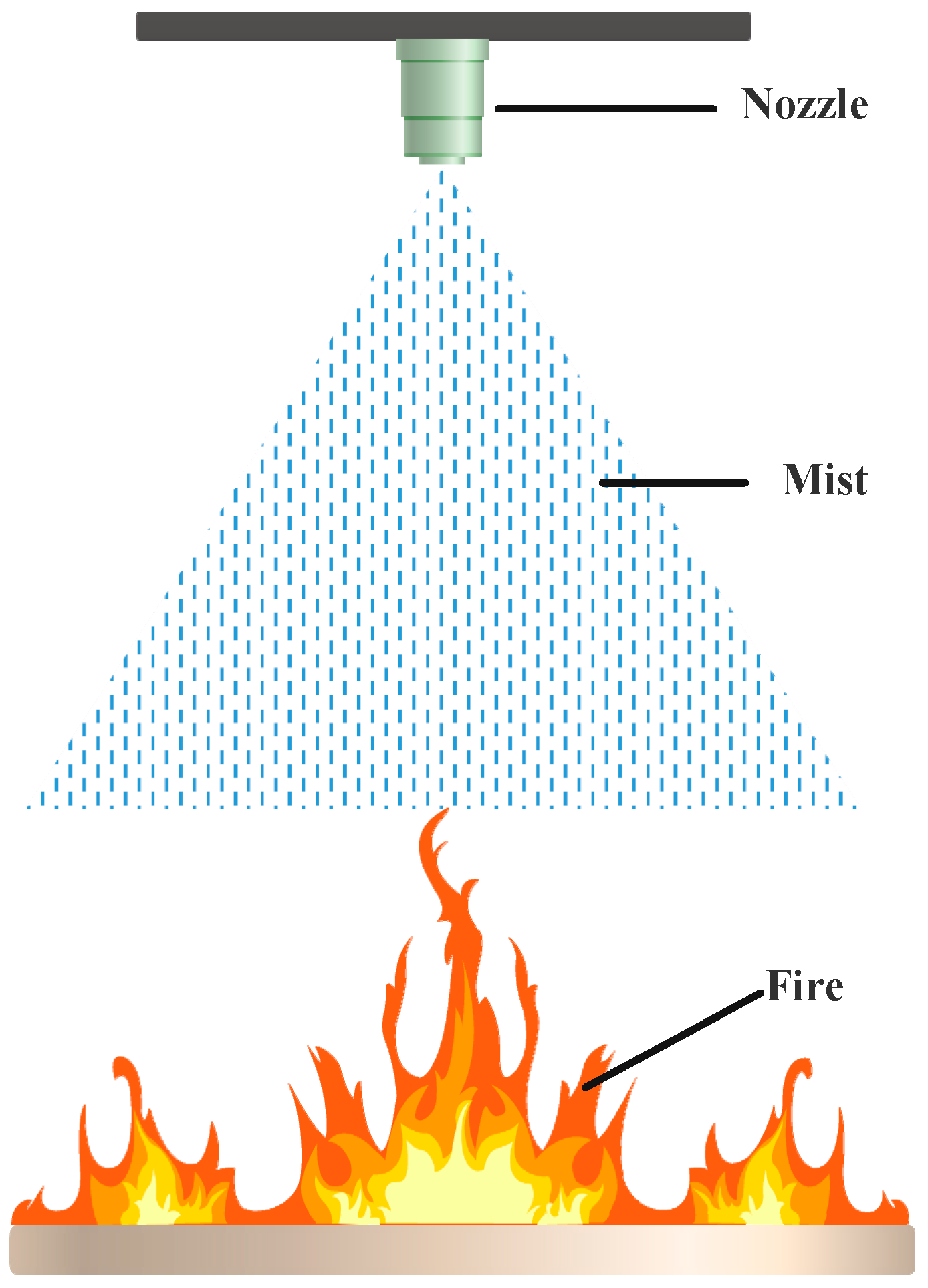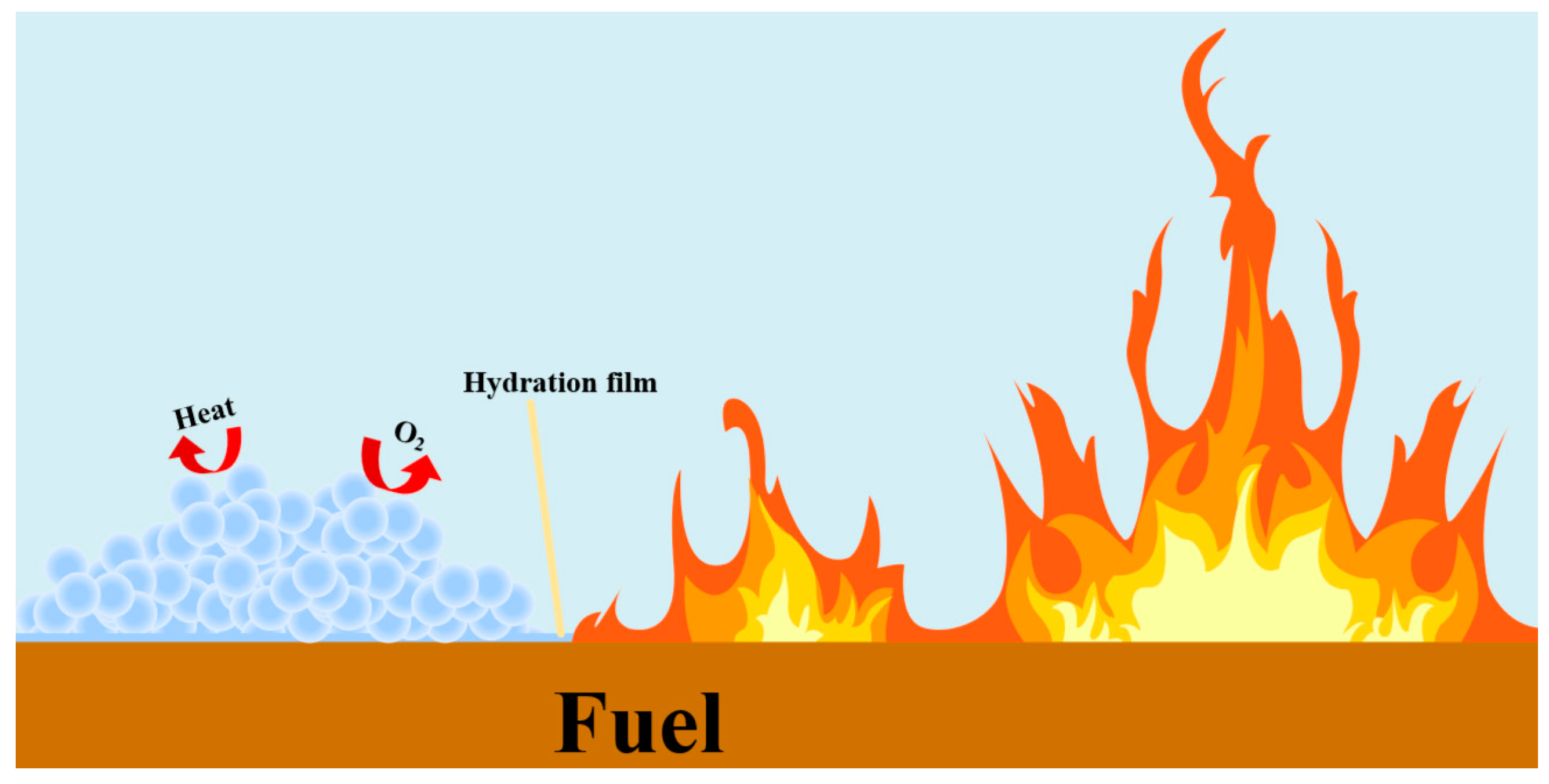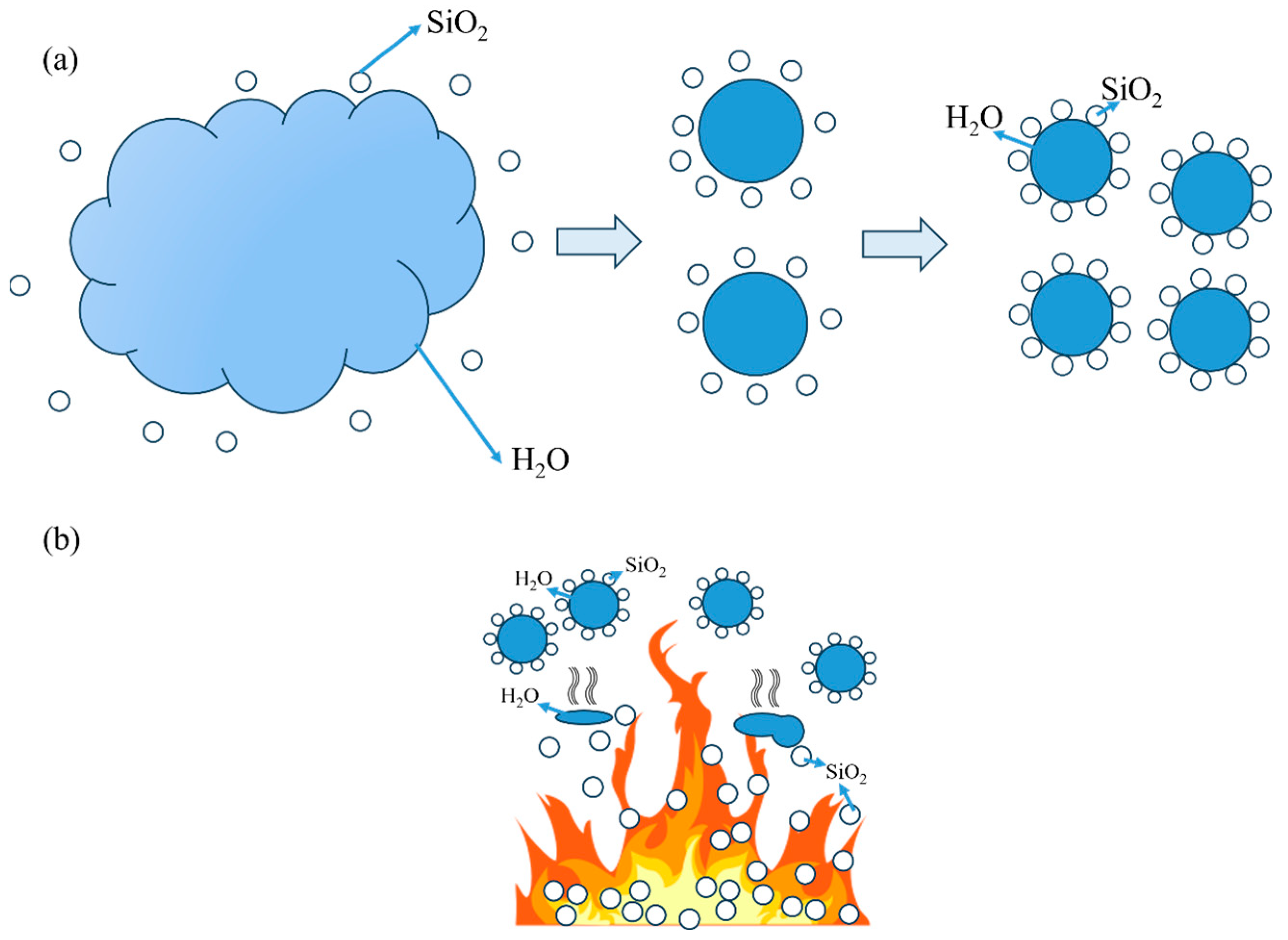Brief Introduction on Advances in Fire Suppression
1. Introduction
2. Descriptions
3. Future Research Direction
Author Contributions
Funding
Conflicts of Interest
References
- Hamzehpour, A.; Verda, V.; Borchiellini, R. Simulation Study on Suppressing Shielded Fires by Water Mist Systems. Fire 2023, 6, 129. [Google Scholar] [CrossRef]
- Lu, G.; Zhao, J.; Zhou, Y.; Fu, Y.; Lu, S.; Zhang, H. Study on Flowability Enhancement and Performance Testing of Ultrafine Dry Powder Fire Extinguishing Agents Based on Application Requirements. Fire 2024, 7, 146. [Google Scholar] [CrossRef]
- Ni, X.; Chen, Y.; Huang, Q.; Zhao, C.; Li, S.; Huang, J.; Wang, J. An Experimental Study on the Transportation Characteristics of Perfluoro(2-methyl-3-pentanone) in a Straight Pipe. Fire 2023, 6, 156. [Google Scholar] [CrossRef]
- Kang, W.; Yan, L.; Ding, F.; Guo, X.; Xu, Z. Experimental study on fire-extinguishing efficiency of protein foam in diesel pool fire. Case Stud. Therm. Eng. 2019, 16, 100557. [Google Scholar] [CrossRef]
- GA 1149; People’s Republic of China Public Security Industry Standards. Technical Report; Standardization Administration of China: Beijing, China, 2014.
- Robinet, A.; Chetehouna, K. A Review of Additives for Water Mist Fire Suppression Systems. Fire Technol. 2024, 60, 2923–2961. [Google Scholar] [CrossRef]
- Yun, X.; Lewis, A.J.; Stevens-King, G.; Sales, C.M.; Spooner, D.E.; Kurz, M.J.; Suri, R.; McKenzie, E.R. Bioaccumulation of per- and polyfluoroalkyl substances by freshwater benthic macroinvertebrates: Impact of species and sediment organic carbon content. Sci. Total Environ. 2023, 866, 161208. [Google Scholar] [CrossRef] [PubMed]
- Burkhard, L.P. Evaluation of Published Bioconcentration Factor (BCF) and Bioaccumulation Factor (BAF) Data for Per- and Polyfluoroalkyl Substances Across Aquatic Species. Environ. Toxicol. Chem. 2021, 40, 1530–1543. [Google Scholar] [CrossRef] [PubMed]
- Alexandrino, D.A.M.; Mucha, A.P.; Almeida, C.M.R.; Carvalho, M.F. Atlas of the microbial degradation of fluorinated pesticides. Crit. Rev. Biotechnol. 2022, 42, 991–1009. [Google Scholar] [CrossRef] [PubMed]
- Wei, S.; Yu, M.; Pei, B.; Xu, M.; Guo, J.; Hu, Z. Experimental and numerical study on the explosion suppression of hydrogen/dimethyl ether/methane/air mixtures by water mist containing NaHCO3. Fuel 2022, 328, 125235. [Google Scholar] [CrossRef]
- Bokka, S.; Ameta, P.; Achary, S.N.; Chowdhury, A. A simple and economical fire test setup for examining the fire retardancy/extinguishing ability of water additive fire-retardant materials on class A fires. Fire Mater. 2024, 48, 93–101. [Google Scholar] [CrossRef]
- Liang, C.; Jin, K.; Liu, P.; Wang, C.; Xu, J.; Li, H.; Wang, Q. The Efficiency of Perfluorohexanone on Suppressing Lithium-Ion Battery Fire and Its Device Development. Fire Technol. 2023, 59, 1283–1301. [Google Scholar] [CrossRef]
- He, Y.; Deng, J.; Yi, X.; Chen, W.; Xiao, Y.; Deng, Y.; Zhu, X.; Yin, L. Effect of fluorine-containing explosion suppressants on methane explosions. J. Therm. Anal. Calorim. 2024, 149, 3711–3722. [Google Scholar] [CrossRef]
- Zhao, M.; Ni, X.; Zhang, S.; Cao, W.; Guan, Y.; Liang, C.; Wang, X.; Zhang, H. Improving the performance of fluoroprotein foam in extinguishing gasoline pool fires with addition of bromofluoropropene. Fire Mater. 2016, 40, 261–272. [Google Scholar] [CrossRef]
- Liu, Z.; Li, C.; Yuan, Z.; He, W.; Zhang, L.; Cheng, Z. Synthesis of Y-Type Fluorinated Surfactant for Aqueous Film-Forming Foam Extinguishing Agent with High Performance. Ind. Eng. Chem. Res. 2024, 63, 12288–12296. [Google Scholar] [CrossRef]
- Li, X.; Du, K.; Zhu, Y.; Zhou, Z.; Zhou, X. Dry water: Toward an ideal extinguishant for lithium-ion battery fire. J. Energy Storage 2024, 80, 110204. [Google Scholar] [CrossRef]
- Wang, Y.-Y.; Zhu, F.-H.; Zhou, H.-L.; Jiang, J.-C.; Huang, A.-C. Development of a novel dry-water fire extinguishing agent containing additives. J. Therm. Anal. Calorim. 2023. [Google Scholar] [CrossRef]
- Li, Q.; Li, Z.; Chen, R.; Zhang, Z.; Ge, H.; Zhou, X.; Pan, R. Numerical Study on Effects of Pipeline Geometric Parameters on Release Characteristics of Gas Extinguishing Agent. Symmetry 2021, 13, 1766. [Google Scholar] [CrossRef]
- Mohamed, M.A.; New, T.H.; Ng, B.F. Modelling of fire-suppressant injection into engine nacelle for various flight regimes. Proc. Inst. Mech. Eng. Part G J. Aerosp. Eng. 2023, 237, 3111–3125. [Google Scholar] [CrossRef]



Disclaimer/Publisher’s Note: The statements, opinions and data contained in all publications are solely those of the individual author(s) and contributor(s) and not of MDPI and/or the editor(s). MDPI and/or the editor(s) disclaim responsibility for any injury to people or property resulting from any ideas, methods, instructions or products referred to in the content. |
© 2024 by the authors. Licensee MDPI, Basel, Switzerland. This article is an open access article distributed under the terms and conditions of the Creative Commons Attribution (CC BY) license (https://creativecommons.org/licenses/by/4.0/).
Share and Cite
Liu, C.; Li, G.; Lu, S. Brief Introduction on Advances in Fire Suppression. Fire 2024, 7, 309. https://doi.org/10.3390/fire7090309
Liu C, Li G, Lu S. Brief Introduction on Advances in Fire Suppression. Fire. 2024; 7(9):309. https://doi.org/10.3390/fire7090309
Chicago/Turabian StyleLiu, Changcheng, Guohui Li, and Song Lu. 2024. "Brief Introduction on Advances in Fire Suppression" Fire 7, no. 9: 309. https://doi.org/10.3390/fire7090309
APA StyleLiu, C., Li, G., & Lu, S. (2024). Brief Introduction on Advances in Fire Suppression. Fire, 7(9), 309. https://doi.org/10.3390/fire7090309





